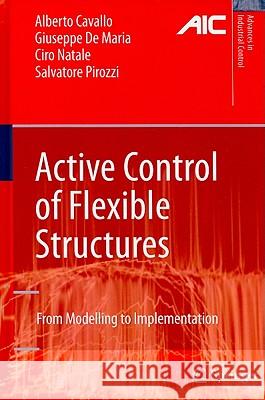Active Control of Flexible Structures: From Modeling to Implementation » książka
Active Control of Flexible Structures: From Modeling to Implementation
ISBN-13: 9781849962803 / Angielski / Twarda / 2010 / 197 str.
Adaptive Control of Flexible Structures deals with vibration control for large-scale flexible structures which are, or may be, subject to a broadband primary vibration field. The authors present a complete rationale for solving problems of vibration, from experimental structural characterization to controller implementation. In reaching this objective they address the following steps: - experimental identification of the dynamic model of the structure; - optimal placement of sensors and actuators; - formulation of control constraints in terms of controller frequency response shape, based on the specification and characteristics of sensors and actuators; - controller design and simulation; and - controller implementation and rapid prototyping. The experimental identification procedure is based on a gray-box approach tailored to the estimation of modal parameters of large-scale flexible structures. The actuator/sensor placement algorithm maximizes a modal controllability index so as to improve the effectiveness of the control action. Taking into account the physical limitations of sensors and actuators, the controller is chosen as a stable, band-pass MIMO system resulting from the closed-form solution of a robust control problem. The closed-form solution is particularly attractive for large-scale control systems, overcoming possible numerical problems caused by ill-conditioned solutions. Experimental results on an aeronautical stiffened skin panel are presented using rapid-prototyping hardware. Adaptive Control of Flexible Structures will be of interest to academics and practising engineers working on vibration-reduction problems in aerospace and other transportation environments; to civil engineers concerned with seismic vibration in buildings; and to graduate students taking courses in mechanical, aeronautical and control engineering, particularly when involved with smart structures and actuators.











